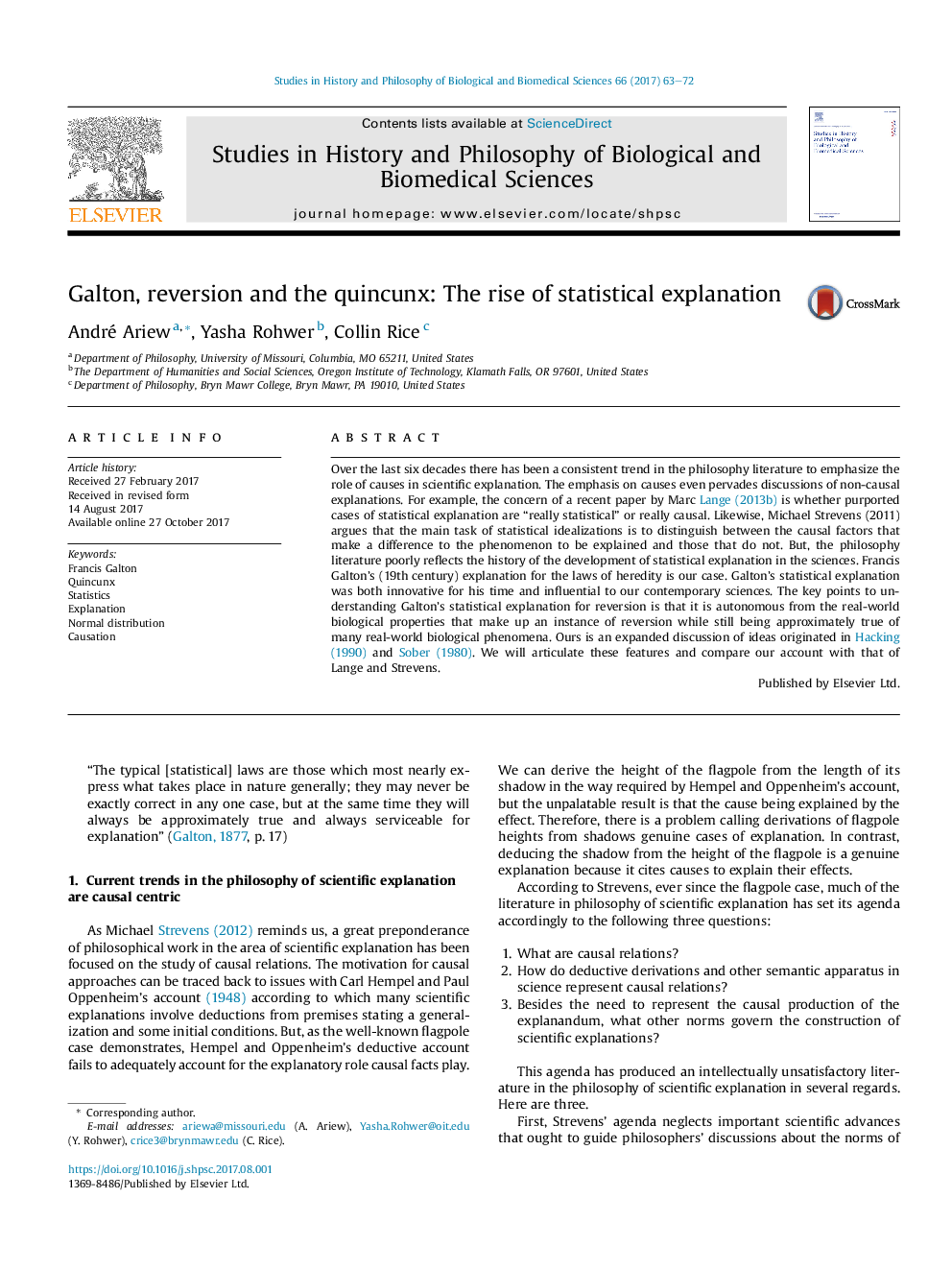| کد مقاله | کد نشریه | سال انتشار | مقاله انگلیسی | نسخه تمام متن |
|---|---|---|---|---|
| 7552118 | 1490499 | 2017 | 10 صفحه PDF | دانلود رایگان |
عنوان انگلیسی مقاله ISI
Galton, reversion and the quincunx: The rise of statistical explanation
دانلود مقاله + سفارش ترجمه
دانلود مقاله ISI انگلیسی
رایگان برای ایرانیان
کلمات کلیدی
موضوعات مرتبط
علوم زیستی و بیوفناوری
علوم کشاورزی و بیولوژیک
علوم کشاورزی و بیولوژیک (عمومی)
پیش نمایش صفحه اول مقاله

چکیده انگلیسی
Over the last six decades there has been a consistent trend in the philosophy literature to emphasize the role of causes in scientific explanation. The emphasis on causes even pervades discussions of non-causal explanations. For example, the concern of a recent paper by Marc Lange (2013b) is whether purported cases of statistical explanation are “really statistical” or really causal. Likewise, Michael Strevens (2011) argues that the main task of statistical idealizations is to distinguish between the causal factors that make a difference to the phenomenon to be explained and those that do not. But, the philosophy literature poorly reflects the history of the development of statistical explanation in the sciences. Francis Galton's (19th century) explanation for the laws of heredity is our case. Galton's statistical explanation was both innovative for his time and influential to our contemporary sciences. The key points to understanding Galton's statistical explanation for reversion is that it is autonomous from the real-world biological properties that make up an instance of reversion while still being approximately true of many real-world biological phenomena. Ours is an expanded discussion of ideas originated in Hacking (1990) and Sober (1980). We will articulate these features and compare our account with that of Lange and Strevens.
ناشر
Database: Elsevier - ScienceDirect (ساینس دایرکت)
Journal: Studies in History and Philosophy of Science Part C: Studies in History and Philosophy of Biological and Biomedical Sciences - Volume 66, December 2017, Pages 63-72
Journal: Studies in History and Philosophy of Science Part C: Studies in History and Philosophy of Biological and Biomedical Sciences - Volume 66, December 2017, Pages 63-72
نویسندگان
André Ariew, Yasha Rohwer, Collin Rice,